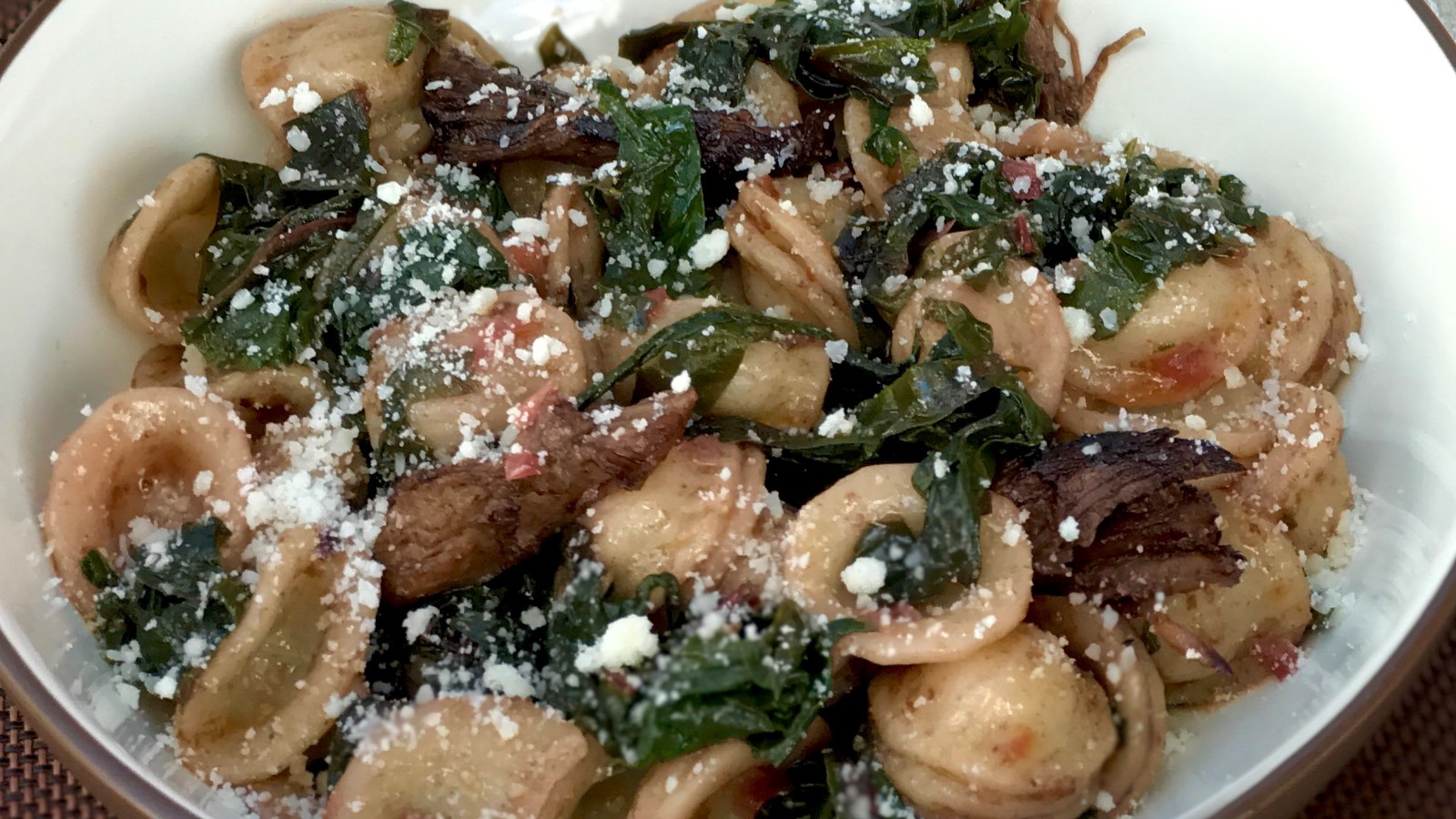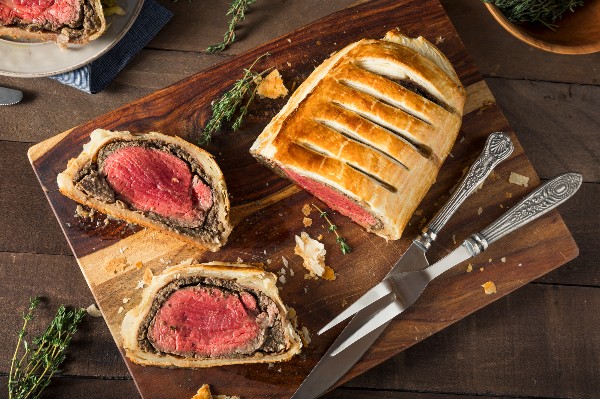Winter in wine country is, when, after a long growing season and frantic fall, a time to relax and to pull people into our homes and around the table with a soul-satisfying meal such as this.
You'll learn a lot about braising from making this dish. It's great to entertain, as a little meat goes a long way and much of the dish can be made in advance. Start in the morning and let the aroma fill your home and welcome your company.
Recipe Title
SERVES 6 to 8
Shortribs
- 6 meaty shortribs (about 4 pounds)
- 1 teaspoon salt
- 1/2 teaspoon freshly ground black pepper
- 2 tablespoons olive oil
- 1 1/2 cups chopped onion
- 1 carrot, cut into 1/4-inch dice
- 1 celery stalk (about 4 ounces), trimmed and cut into 1/4-inch dice
- 2 plump garlic cloves (about 1/2 ounce), peeled and minced
- 2 tablespoons tomato paste
- 1 bottle (750 ml) cabernet sauvignon
- 1 bay leaf
- 6 fresh parsley stems
- 4 fresh thyme stems
- 2 thick pieces orange peel, each about 1/2-inch wide by 2 inches long
- 1 to 2 cups low-sodium chicken stock
Orecchiette and Chard
-
- 1 pound dried orecchiette
- 3 tablespoons olive oil
- 2 plump garlic cloves (about 1/2 ounce), peeled and minced
- 1 cup finely chopped onion
- 2 bunches Swiss chard (about 1 pound each), ribs removed, cut into 1/4-inch slices, well rinsed, and drained (about 12 loosely packed cups)
- 1/2 cup freshly grated Parmigiano Reggiano cheese, plus more for topping
- For the shortribs: Preheat oven to 325°F.
- Trim the thick layers of external fat from the short ribs. Don't overdo it; small amounts of fat will create flavor and most of the fat will be removed when the recipe is degreased toward the end. Season all sides of the short ribs with the salt and pepper.
- In a heavy pot such as a 5-quart stock pot or Dutch oven that has a tight-fitting lid, warm the oil over medium-high heat. Add 3 of the short ribs, sear on all sides until brown, about 4 to 5 minutes per side. If there is a lot of exposed meat on the end, use tongs to stand ribs up to sear ends for about 2 minutes per end. Remove the short ribs from pot and place on a plate or shallow dish. Repeat with remaining shortribs (you may need less time to brown sides, as oil will be really hot by now).
- Pour off all but 2 tablespoons of the fat from the pan. Reduce the heat to medium and add the onion, carrot, and celery to pan, scraping up any browned pieces of meat from the bottom of the pan with a wooden spoon. Sauté, stirring often, until vegetables are a bit browned, about 8 minutes. Add the garlic, and stirring constantly, sauté until just fragrant, about 1 minute longer. Add tomato paste and, stirring continuously, sauté until the tomato paste just begins to caramelize, 1 to 2 minutes longer.
- Raise the heat to high and deglaze the pan with the wine, scraping up any browned juices from the bottom of the pot with a wooden spoon. Reduce heat to medium-high and reduce the wine by half at a high simmer, about 12 to 15 minutes.
- Add the bay leaf, parsley, thyme and orange peel. Add the shortribs back to the pot. Add enough chicken stock to bring liquid halfway up the ribs. Bring the stock to a boil, place a piece of parchment paper on top of the pot, cover tightly, and place in the oven. Cook for 2 to 2 1/2 hours, or until the meat is falling off the bone.
- Remove the short ribs from pot and place on a platter. When cool enough to handle, shred meat from bones into bite-sized pieces, discarding any visible fat or gristle. Reserve warm until needed.
- Strain the cabernet sauce through a fine-mesh sieve, pressing the back of a large spoon over the solids to extract maximum amount of sauce. Degrease the sauce either by using a gravy separator, tilting the pan to one side and skimming the fat off with a large spoon, or making the dish up to this point the day before, refrigerating it and spooning off the layer of fat that congeals on the surface. Place the degreased sauce in a large skillet over medium-high heat and reduce to a light sauce consistency (thick enough to coat the back of a spoon), 4 to 5 minutes if the sauce is warm. Reserve the sauce warm on low heat.
- For the orecchiette and chard: Bring a large pot of salted water to a boil. Add the orecchiette and cook according to package directions until al dente, about 12 minutes.
- Meanwhile, in a large soup or stockpot, warm the olive oil for 1 minute over medium heat. Add the onion and garlic and sauté, stirring frequently, until very lightly colored, 6 to 8 minutes. Add the chard, toss well to coat with the olive oil and sauté, stirring frequently, until softened, about 6 minutes. This will seem like a lot of chard when you first put it in the pot, but it will wilt down considerably. Ladle a cup of the pasta cooking water over the chard and continue to sauté, stirring frequently, until most of liquid is evaporated, about 4 minutes.
- Drain the pasta and add to the chard mixture. Pour half of the cabernet sauce over the pasta and chard and toss to coat the pasta with the sauce. Add the cheese to pasta and stir well to combine. Place the pasta on a serving platter or divide into large pasta bowls. Place the shredded meat in the remaining cabernet sauce and warm through over medium heat. Spoon the meat and sauce over pasta. Serve immediately with additional grated Reggiano Parmigiano cheese.




